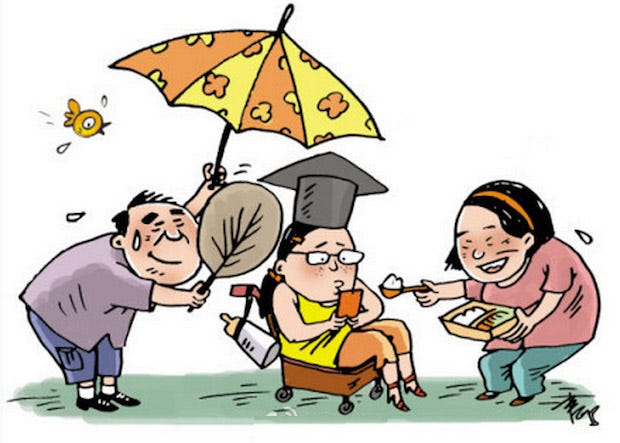
“Half-Past Three Problem” is the problem perplexed parents in China for years. It refers to the tough situation caused by the early closure of the school and late working hours of parents. Kids usually finish school at half-past three in the afternoon; however, most parents have to work until six or even later, which makes it hard for parents to pick up the kids.
“The Half-Past Three Problem” has been heatedly discussed in China in these years. The problem is a specific outcome of China’s economic and social development, as well as a certain developmental stage of education. It is not the first time that the issue has been raised; yet, due to the interview of Chen Baosheng, the Minister of Education, in the Chinese People’s Political Consultative Conference and National People’s Congress, it prompted another round of passionate discussion recently.
Young parents concerning the problem are in the critical stage of their career development; meanwhile, the key stage of child-rearing. Before 3:30 pm, kids are studying at schools, and schools are whom taking care of them. After 3:30 pm, students are supposed to go home, and accordingly, the caring duty is transferred to their parents. However, because of the schedule difference between parents and children, it is very hard for parents to pick up their kids on time.

The Ministry of Education attaches great importance to this issue. In February last year, the Minister of Education issued the notice to resolve the problem. Later, twenty-five provinces formulated policy measures in accordance with the provinces’ practices. After one year practice, some feasible ways have been developed.
Shanghai, Beijing, Guangxi, and Nanjing, each represents a method to settle the problem, which can be generalized as government subsidizing, extra fee paying, flexible closure time of schools, and drawing support from communities. Details are described as following:
Shanghai stipulated that the after-school service should be provided by primary and secondary schools. Teachers who participate in the service should be given merit pay accordingly.
Beijing issued the after-school service hour is from 3 pm to 5 pm every day, which is for students to participate in extracurricular activities. Students pay extra 700–900 RMB (100–140 dollars) every year for the service.
Guangxi is a Chinese autonomous region in South Central China, bordering Vietnam. The per capita GDP of the province was 38,000 yuan (US$5,850) in 2016. The province explored the use of community resources to tackle the problem. There are classrooms for children to stay after class, and community workers will volunteer to help them with homework.
Nanjing is the second largest city in the East China. The city’s per capita GDP in 2016 was 116,930 yuan (US$17,900), which was more than its in Beijing, Shanghai and Guangdong. Schools in Nanjing develop flexible leaving school hours. Students can choose to stay or leave, and schools shall assume custody duty for the students who decide to stay.
However, although students may be able to stay schools until 5 pm, it’s still difficult for some parents to pick up them. In the past, having nowhere to send the child, most parents sought their parents for help. However, grandparents often spoil the kids so much that they are not very reliable in disciplining the children. Kids brought up by their grandparents are more inclined to be addicted to computer games or television programs, which is also what parents worried about.

The difficulty initiates numbers of nurseries and primary care centers, though some arrange students to do homework or readings, or organize them to take sports-training or artistic-training lessons, the rest, which dominates the market, are tutorial classes.
So far, the business solutions are far from satisfying. For the former ones, parents are worried about teachers’ qualification; for the latter, they are afraid it will give kids extra burdens after school. Moreover, the market is growing so wildly but without sufficient corresponding supervision, which turns nowhere but results in market chaos and parents’ confusion.
Challenges are also opportunities for the business. The statistics show the number of primary and middle school students in Shanghai is up to 700,000, of which 200,000 families are in need of children-care after schools. If the cost of late child-care is 2,000 RMB (334 dollars) per kid, there will be a 4 billion RMB (600 million dollars) market in Shanghai alone.
Up to now, although much thought and consideration have been given to these issues, it is still far from having the problem solved. How do parents in your country deal with the problems? Do you have any good idea to tackle or feel like exploring education market for children in China?



